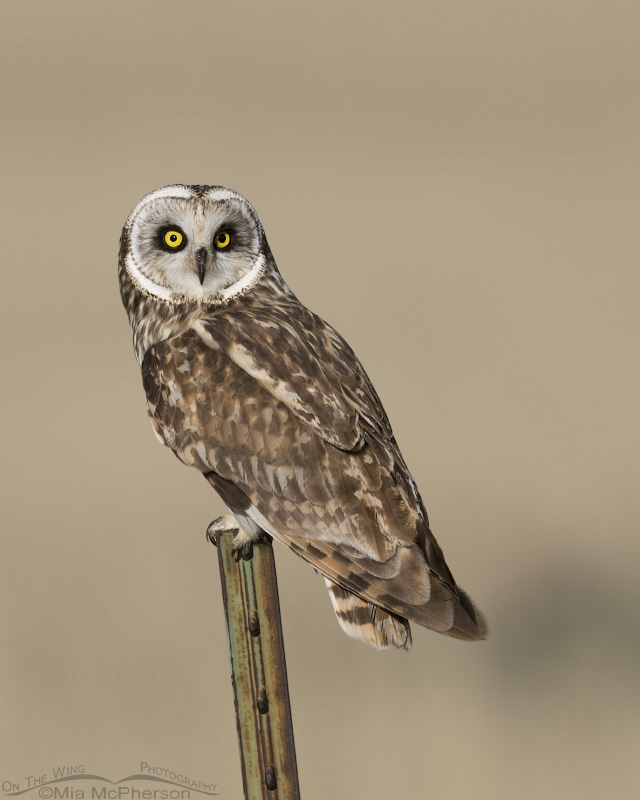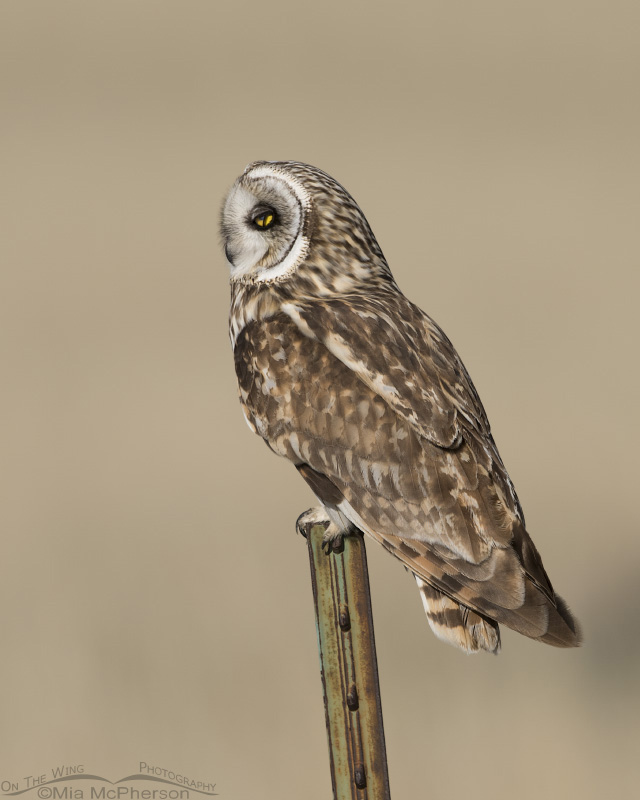 Northern Utah Short-eared Owl male – Nikon D810, f7.1, 1/1600, ISO 200, Nikkor 500mm VR, natural light, not baited
Northern Utah Short-eared Owl male – Nikon D810, f7.1, 1/1600, ISO 200, Nikkor 500mm VR, natural light, not baited
I sure enjoyed my time spent photographing Short-eared Owls last week in Box Elder County in Northern Utah. They are amazing owls to see in flight, while hunting, preening or simply perched and looking around. I even have a few images of other Short-eared Owls dozing on fence posts but I do love to see their gorgeous yellow eyes. It might be because owls have front facing eyes or that their eyes are large or maybe both, but their eyes mesmerize me. Owls use both their hearing and sight when they are hunting prey.
 Short-eared Owl with nictitating membrane exposed – Nikon D810, f7.1, 1/1600, ISO 200, Nikkor 500mm VR, natural light, not baited
Short-eared Owl with nictitating membrane exposed – Nikon D810, f7.1, 1/1600, ISO 200, Nikkor 500mm VR, natural light, not baited
Some birds, sharks, reptiles, and mammals have a translucent or transparent third eye lid called a nictitating membrane. This image shows a Short-eared Owl nictitating membrane that is partially exposed. The dark line near the center of the eye is the edge of the nictitating membrane. Unlike upper and lower eyelids which open and close vertically the nictitating membrane moves horizontally across the eye.
Nictitating membranes in owls moisten the eyes and protect them from dust, debris, while feeding their young or while catching or consuming prey animals. Since this owl was just perched it may have been just moistening its eyes with the membrane. Because the membrane is transparent owls can still see through the membrane.
I observed and photographed a Great Horned Owl nest for several weeks in Florida during the nesting season in 2008 where the female owl had a nictitating membrane in her right eye that was stuck in a position where it always showed. I am not certain what caused that to happen but I do know it didn’t prevent the owl from hunting for prey nor did it hinder her from taking care of her young probably due in part to the transparency of the membrane. Her single owlet branched and fledged in her care.
Life is good.
Mia
Click here to see more of my Short-eared Owl photos plus with facts and information about this species.


I didn’t know that about the membrane that runs across the eye. Great shots too Mia.
Many thanks
Great photos again, Mia. I’m very fortunate to be able to demonstrate barn owls and Harris hawks at the Arizona-Sonora Desert Museum, and see them close up. The barn owls are my favorites. Their hearing is astonishing, and the feathered facial disc you see surrounding their eyes actually acts like a parabolic microphone or satellite dish, focusing sound back to their ears. Barn owls have the most acute hearing of any bird ever studied, and can hear a mouse from 50 feet away. A lab in Britain once put a barn owl in a totally darkened room and released mice into the room; the bird was able to catch the mice on the first try nine times out of 10. Just amazing animals.
Thank you. Again.
I love the photos and the comments and info about the birds you photograph!
These are wonderful images…especially like the pose and detail in the first…also LOVE the image of the Great Horned on your link…the owl itself and the interwoven branches…BEAUTIFUL!!!!
Beautiful photos, Mia. Also very interesting commentary.